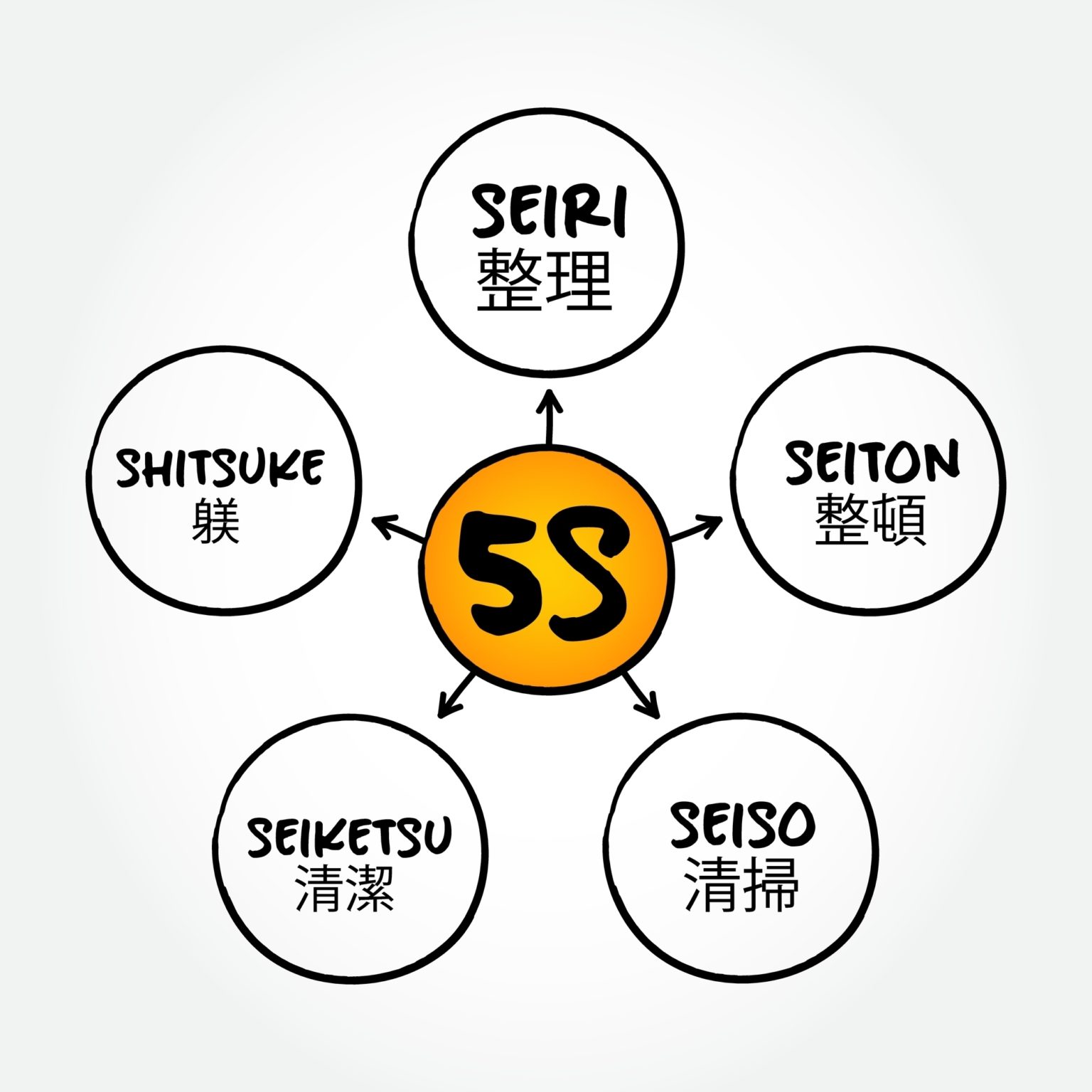Embracing (and Using) 5S Principles

No one likes a mess. There’s something comforting about a well-managed environment where there’s a place for everything and everything is in its place. It’s this orderly approach to factory management that enables some producers to be more efficient than others — not to mention safer and easier to manage. It all comes down to having frameworks for creating order. The world of Lean manufacturing offers a system of five frameworks, dubbed 5S (for “the five S’s”), precisely for this purpose.
An introduction to 5S principles
5S is a foundational Lean principle, rooted in efficiency and excellence. It applies to any Lean production environment, and quality is at its core. Quality, according to the principle, starts with a pleasant work environment — namely, a clean, uncluttered, and safe one. By making work areas as organized and safe as possible, organizations not only reduce waste and boost productivity, but also make a great first impression on their customers.
The 5S method closely resembles Henry Ford’s CANDO philosophy. The automaker stressed the importance of cleanliness, organization, and discipline — along with ongoing improvement — to keep costs low and maximize productivity and profits. Starting with Toyota, Japan adapted the CANDO methodology into what would become 5S principles.
Breaking down 5S
The 5S system has its roots in Japanese culture. This quality tool derives from five Japanese terms that begin with the letter “S,” each of which creates a better-functioning workplace. The pillars of 5S include:
- Seiri (Organize): Separating essential components and equipment from inessential ones.
- Seiton (Orderliness): Arranging and identifying necessary parts for ease of use.
- Seiso (Cleanliness): Conducting a clean-up initiative.
- Seiketsu (Standardize): Practicing Seiri, Seiton, and Seiso consistently each day.
- Shitsuke (Discipline): Creating a habit to follow the previous four principles.

Manufacturers who embrace 5S principles inject organization and discipline into the workplace. Following 5S doesn’t even require new equipment or tools; rather, it requires a mindful approach to everyday tasks.
A place for everything and everything in its place
For manufacturers seeking to understand 5S in practice, it helps to conceptualize some of the most basic (yet powerful) applications within the factory. Some examples of 5S in practice include:
- Removing outdated materials, redundant equipment, and unnecessary computer files.
- Classifying equipment according to frequency of use and determining what to remove.
- Identifying and allocating space for necessary materials, and keeping it compact.
- Keeping tools and equipment clean and operational, ready at any time.
- Standardizing best practices through visual management approaches.
In short, 5S is about streamlining, cleaning, organizing, and sticking to your process — all while improving upon them whenever possible. A team following 5S principles can enjoy several benefits, including improved safety, better asset utilization, higher product quality, lower costs, and more.
A steppingstone into Lean manufacturing
The 5-S method applies not only to the physical makeup of the factory floor, but to individual mindsets, as well. Producers looking to adopt 5S must secure buy-in from every employee, at every level. Start by educating employees on 5S principles, highlighting the benefits for both the company and the individual.
With adequate training, consistent communication, and plenty of encouragement, you may see individual employees becoming 5S advocates, using their knowledge and insight to organize teams and promote processes aimed at making operations at your facility safer and more efficient.